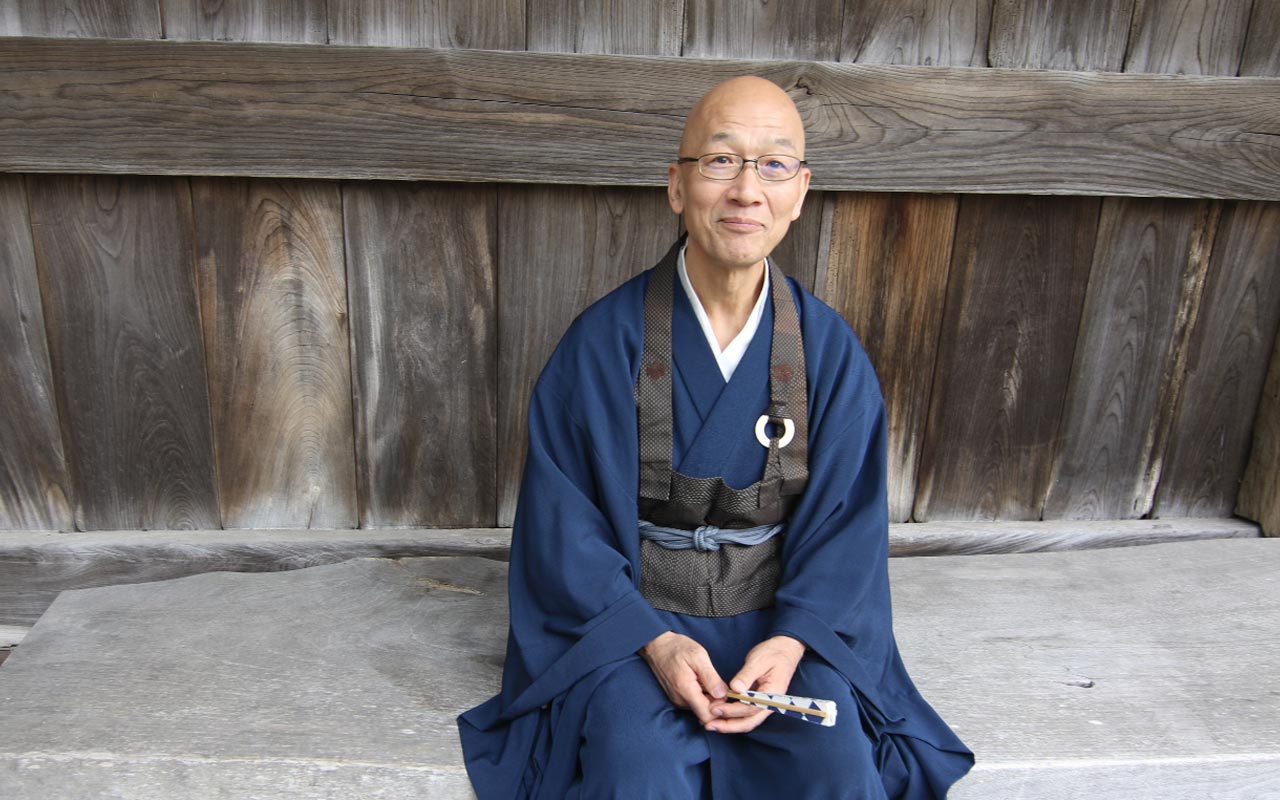Buddhism 3.0: A Modern Interpretation of Buddhist Teachings
Within the diverse landscape of Zen Buddhism, a new and compelling thread is emerging: Buddhism 3.0.
Conceived by Issho Fujita and Ryodo Yamashita, this innovative approach seeks to enrich the existing Zen landscape by integrating elements from both Mahayana and Theravada traditions.
Personally, what I find most appealing is the openness of Buddhism 3.0, which aims to address the nuanced challenges and opportunities of modern life while staying true to the core principles of Zen. Through a series of workshops, books, and practical teachings, this fresh perspective is gaining momentum and promises to offer new avenues for exploration and practice within the broader Zen community.
In this article, we will delve deeper into the concept of Buddhism 3.0, its future directions, and how it could transform the way we approach Zen Buddhism today.
What is Buddhism 3.0?
Buddhism 3.0 is a concept proposed by Buddhist priests Issho Fujita and Ryodo Yamashita in Japan. According to them, Buddhism 1.0 refers to the Mahayana tradition that arrived in Japan more than a thousand years ago, while Buddhism 2.0 is Theravada Buddhism, which gained popularity in Japan in the 1990s. Buddhism 3.0 aims to integrate the wisdom of both these traditions. It offers body-friendly approaches to meditation and “specific skills to ease heartache”.
Fujita serves as the head of the Soto Zen International Education Center and has taught extensively in the United States. Yamashita has studied Theravada Buddhism and is the abbot of a temple he founded in Kamakura. Together, they are traveling and offering workshops across Japan to encourage a conversation about the direction of Buddhism in the country, especially among young Buddhist priests.
Who is Fujita Isshō?
Issho Fujita is a Buddhist priest who serves as the head of the Soto Zen International Education Center. He has taught extensively at centers across the United States. In the context of the concept “Buddhism 3.0,” he collaborates with Ryodo Yamashita to offer workshops across Japan. These workshops aim to encourage a conversation about the future direction of Buddhism in Japan, particularly among young Buddhist priests. Fujita is involved in instructing participants in Zen meditation workshops and is a key figure in the initiative to integrate the wisdom of Mahayana and Theravada Buddhist traditions through Buddhism 3.0.
Who is Yamashita Ryōdō?
Ryodo Yamashita is a Buddhist priest who has studied Theravada Buddhism and is the abbot of a temple he founded in Kamakura, Japan. He collaborates with Issho Fujita on the concept of “Buddhism 3.0,” which aims to integrate the wisdom of both Mahayana and Theravada Buddhist traditions. Together, they travel and offer workshops across Japan to encourage discussions about the future direction of Buddhism in the country. These workshops are particularly aimed at young Buddhist priests who are navigating a tradition that is losing some of its authority in modern culture. Yamashita’s work focuses on offering body-friendly approaches to meditation and “specific skills to ease heartache,” as part of the Buddhism 3.0 initiative.
Characteristics of Buddhism 3.0
Understanding the characteristics of Buddhism 3.0 is essential in comprehending this new approach to Buddhist philosophy. These characteristics highlight the unique features that set Buddhism 3.0 apart from its predecessors, emphasizing the importance of integrating Buddhist teachings from different traditions, personal transformation, and social engagement.
Key Features of Buddhism 3.0
Buddhism 3.0 incorporates several key features that distinguish it from previous versions of Buddhism. Some of these features include:
- Integration of Traditions: Buddhism 3.0 aims to integrate the wisdom of both Mahayana and Theravada traditions. Mahayana is referred to as Buddhism 1.0 and Theravada as Buddhism 2.0 in this context.
- Body-Friendly Meditation: One of the key features is the focus on body-friendly approaches to meditation, making it more accessible and comfortable for practitioners.
- Skills to Ease Heartache: Buddhism 3.0 offers specific skills designed to ease emotional pain or heartache, making it relevant to modern-day challenges.
- Modern Relevance: The concept is designed to be relevant to modern culture, particularly in Japan, where traditional forms of Buddhism are losing some of their authority.
- Workshops and Education: Fujita and Yamashita are actively promoting the concept through workshops across Japan, targeting especially young Buddhist priests.
- Inclusive Approach: By combining elements of both major Buddhist traditions, Buddhism 3.0 aims to be more inclusive and comprehensive.
- Future-Oriented: The concept encourages conversations about the future direction of Buddhism in Japan, aiming to revitalize and modernize the practice for new generations.
- Cultural Adaptability: Although the concept originated in Japan, its principles are designed to be adaptable and relevant to different cultural contexts, as evidenced by Fujita’s extensive teaching in the United States.
- Practical Application: Beyond theoretical discussions, Buddhism 3.0 focuses on practical applications like meditation techniques and emotional well-being, making it applicable in everyday life.
- Community Engagement: The initiative aims to engage the community, especially the younger generation of Buddhist priests, in discussions and practices that can help evolve the tradition.
By embracing adaptability and flexibility, Buddhism 3.0 provides a more inclusive and accessible approach to Buddhist philosophy better suited to the challenges and needs of the modern world.
Personal Transformation and Empowerment in Buddhism 3.0
Buddhism 3.0, with its emphasis on integrating the wisdom of Mahayana and Theravada traditions, offers a holistic approach to personal transformation. Its body-friendly meditation techniques and skills for easing emotional pain provide practical tools for self-improvement. These elements not only facilitate personal transformation but also empower individuals to navigate modern-day challenges with greater resilience and mindfulness.
- Holistic Wisdom: By integrating the teachings of both Mahayana and Theravada Buddhism, individuals can gain a more comprehensive understanding of Buddhist philosophy, which can be transformative.
- Emotional Healing: The specific skills offered to ease heartache can help individuals deal with emotional challenges, leading to personal transformation.
- Mindfulness and Meditation: The body-friendly approaches to meditation can help individuals become more mindful, leading to increased self-awareness and transformation.
- Practical Skills: Buddhism 3.0 focuses on offering practical skills for dealing with modern-day challenges, which can empower individuals to handle life’s difficulties more effectively.
- Community Support: The workshops and educational programs aim to create a supportive community, which can be empowering for individuals, especially those who are new to Buddhism or are young Buddhist priests.
- Cultural Relevance: The modern relevance of Buddhism 3.0 makes it more accessible and relatable, empowering individuals to integrate Buddhist practices into their daily lives without cultural or historical barriers.
- Self-Reliance: The focus on practical application and skills training can empower individuals to become more self-reliant in their spiritual practice, rather than depending solely on traditional institutions.
- Future Orientation: By encouraging conversations about the future of Buddhism, individuals are empowered to contribute to the evolution of the tradition, making it more inclusive and relevant.
While the concept of Buddhism 3.0 doesn’t explicitly focus on personal transformation and empowerment, its characteristics suggest that it has the potential to significantly contribute to these areas.
Social Engagement in Buddhism 3.0
Social engagement appears to be an integral part of Buddhism 3.0. The workshops and educational programs led by Issho Fujita and Ryodo Yamashita aim to foster community involvement, particularly among young Buddhist priests. These workshops serve as platforms for dialogue and discussion, encouraging a sense of community and shared purpose.
- Relevance to Modern Society: Buddhism 3.0 is designed to be culturally and socially relevant, making it more accessible and appealing to a broader audience. This relevance can encourage more people to engage with Buddhist practices and principles, thereby fostering social engagement.
- Conversations about the Future: By encouraging discussions about the future direction of Buddhism, Buddhism 3.0 engages the community in shaping the evolution of the tradition. This participatory approach empowers individuals to have a say in the social and cultural aspects of Buddhism, thereby enhancing social engagement.
- Practical Application: The focus on practical skills for easing emotional pain and body-friendly meditation techniques can be applied in various social settings to improve interpersonal relationships and community well-being.
- Inclusivity: By integrating the wisdom of both major Buddhist traditions, Buddhism 3.0 aims to be inclusive, inviting people from different backgrounds and beliefs to engage in its practices and discussions.
Buddhism 3.0 places a strong emphasis on community building, cultural relevance, and practical application, all of which contribute to enhancing social engagement within the Buddhist community and potentially beyond.
Future Directions for Buddhism 3.0
In the evolving landscape of modern spirituality, Buddhism 3.0 emerges as a transformative concept aimed at redefining traditional Buddhist practices for contemporary society. Conceived by Issho Fujita and Ryodo Yamashita, this innovative approach seeks to integrate the wisdom of Mahayana and Theravada Buddhism while addressing the challenges and needs of today’s world. As Buddhism 3.0 gains traction, several future directions are becoming increasingly evident, shaping the way this concept could influence both individual lives and broader spiritual communities.
- Expanding Educational Outreach: Fujita and Yamashita are committed to spreading the principles of Buddhism 3.0 through workshops and educational programs, targeting especially young Buddhist priests and laypeople interested in spirituality.
- Publications and Media: The concept has already been favorably received through books written by the two priests. Continued publications and perhaps even digital content could further disseminate their ideas.
- Global Influence: Both priests have international experience, particularly in the United States and Myanmar. This opens the door for Buddhism 3.0 to have a global impact, adapting to different cultural contexts.
- Addressing Modern Challenges: Buddhism 3.0 aims to be socially and culturally relevant, offering practical solutions for modern-day challenges such as stress, emotional well-being, and social disconnection.
- Revisiting and Updating Traditional Practices: The priests believe that traditional forms of Buddhism have their limitations in addressing contemporary issues. They propose that it’s alright to update these practices while maintaining their good points, making the religion more adaptable and effective.
- Mindfulness and Beyond: While acknowledging the effectiveness of mindfulness as a therapeutic tool, Fujita and Yamashita aim to go beyond it by reconnecting with the original Buddhist teachings that focus on overcoming the sense of “self.”
- Community Engagement: Given the participatory nature of their workshops and talks, community engagement is likely to be a significant aspect of Buddhism 3.0, encouraging more people to be actively involved in shaping the future of the tradition.
By addressing these various aspects, Buddhism 3.0 is poised to offer a more inclusive, relevant, and practical approach to spirituality, making it a compelling direction for the future of Buddhism.
Conclusion
In conclusion, Buddhism 3.0 stands as a groundbreaking initiative that seeks to harmonize ancient wisdom with modern needs. Conceived by Issho Fujita and Ryodo Yamashita, this approach is more than just a spiritual philosophy; it’s a dynamic, evolving framework designed to address the complexities of contemporary life.
Through educational outreach, publications, and a focus on practical application, Buddhism 3.0 is not only revitalizing an ancient tradition but also making it accessible and relevant for today’s world. As it gains momentum, this innovative form of Buddhism holds the promise of transforming individual lives and potentially reshaping the broader spiritual landscape.
If you’re interested in diving deeper into the transformative world of Buddhism 3.0, consider reading the insightful books by Issho Fujita and Ryodo Yamashita, available through this Amazon link.

